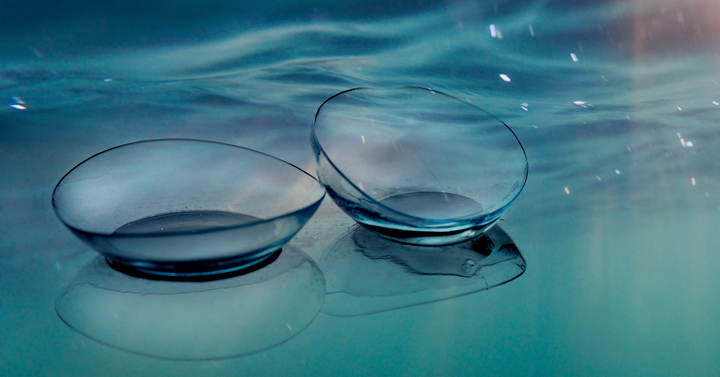According to Contact Lens Spectrum, there were an estimated 2.5 billion daily-wear contact lenses, weighing approximately 44,000 pounds, entering United States wastewater in 2019. While this volume is low compared to waste generated from plastic bottles, contact lenses nevertheless have a negative impact on our water systems and oceans. Because lenses are denser than water and soft, they sink and break down into fine particles. In turn, they are consumed by aquatic creatures and ultimately end up in the human food chain. Most consumers are not aware of the impact of disposing of lenses in their sink.
Contact lens manufacturers recognize the problem and have instituted programs for recycling lenses and packaging. Acuvue’s Contact Lens Recycle Programme is the United Kingdom’s first free recycling program for contact lenses, enabling all contact lens wearers to dispose of their lenses, blister packaging, and foil regardless of brand. Consumers can elect to have waste collected by courier or dispose of it themselves at participating retailers. The recyclable waste is turned into products such as outdoor furniture and plastic lumber. This program has resulted in the recycling of 2.375 million contact lenses in the United Kingdom. Bausch + Lomb’s ONE by ONE Recycling Program reflects the company’s partnership with TerraCycle to create a free recycling program for Biotrue® ONEday contact lenses and blister packs, as well as lenses and packs from other Bausch + Lomb brands. According to Bausch +Lomb, nearly 27 million units of used contact lenses, top foils, and blister packs have been recycled since the program was launched in 2016.
According to the American Optometric Association (AOA), many contact lens users are unaware that they can — and should — recycle their lenses. Patient education, awareness, and compliance are key to increasing recycling and driving sustainability. Doctors should inform their patients about recycling programs. Their practice can also collect used lenses and packaging from patients and ensure that these materials are disposed of responsibly.
Ultimately, sustainability and circularity can only be achieved if all participants recognize the impact of their actions and understand the options available to reduce their footprint. In the case of contact lenses, patient education, awareness and compliance will go a long way. Consumers need to be informed so they think twice before discarding their lenses in the sink.
Kline’s experience in the Medical Device and Packaging/Polymers industries provides us with the expertise to help our clients manage the challenging realm of recycling medical plastics in contact lenses and other consumer healthcare devices. If you have questions, feel free to email Sunanda.Desai@klinegroup.com.
About this article:
The Next Recycling Frontier — Where Do Used Contact Lenses Go? was written by Sunanda Desai, a Vice President in Kline & Company’s Management Consulting division. She has nearly 20 years of experience managing strategic projects focusing on business strategy and technology/innovation management for medical devices, biomedical materials, specialty chemicals, and consumer care clients. Sunanda has specific functional expertise in advising clients on operational strategies for new market entry, to enhance product and service offerings, increase market share, customer share of wallet, and enhancement of innovation processes. She has a BS in Math/Computer Science from Carnegie Mellon University and an MBA from Erasmus University.
Press inquiries:
Lance Debler
Content Marketing Manager
Kline & Company
+1-973-435-3425

